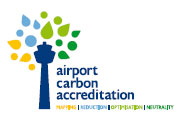
Paul Steele, Executive Director, ATAG: “I think it’s fair to say that aviation is the only industry that went to Copenhagen with a clear set of targets and a strategy for achieving them; we got a lot of respect for that. Having a united approach was invaluable in getting our message across.”
According to the Intergovernmental Panel on Climate Change (IPCC), aviation produces around 2% (IPEC 2001) of global, manmade carbon emissions. As aviation grows to meet increasing demand, the IPCC forecasts that its share of global manmade CO2 emissions will increase to around 3% in 2050.
Prior to COP15 there were strong expectations that the result would be a global framework for addressing climate change. However, by the end of event, there was no replacement for the Kyoto Protocol, which was seen by many as a disappointing result. What did emerge was the ‘Copenhagen Accord’, which provides a set of voluntary, rather than legally-binding, objectives.
The ‘Copenhagen Accord’ recognises the scientific view that an increase in global temperature below 2 degrees is required to stave off the worst effects of climate change. In order to achieve this goal, the ‘Accord’ specifies that industrialised countries will commit to implement, individually or jointly, quantified economy-wide emissions targets from 2020; a number of developing countries, including major emerging economies, agreed to communicate their efforts to limit greenhouse gas emissions every two years. Agreement was also reached to raise finance to kickstart action in the developing world to deal with climate change.
The aviation industry continues to move forward with its aggressive plan of action to combat emissions even though a binding deal was not reached at COP15. The industry position commits the entire sector to specific targets: Improving fuel efficiency by an average of 1.5% per year from 2009 to 2020; stabilising emissions from 2020 with carbon-neutral growth; and an aspirational goal to reduce net emissions from aviation by 50% by 2050 compared to 2005 levels.
All aviation industry stakeholders – airports, airlines, aircraft and equipment manufacturers and ANSPs – have been collaborating strongly. A significant step was the aviation industry Declaration on climate change, which was signed in Geneva in 2008 and formed the basis of this strong collaboration.
“I think it’s fair to say that aviation is the only industry that went to Copenhagen with a clear set of targets and a strategy for achieving them; we got a lot of respect for that. Having a united approach was invaluable in getting our message across,” said Steele. “We were very effective in engaging with international governments. We also put on what were called ‘side events’ promoting the industry’s activities – technological and operational – that are making an impact. We engaged actively throughout the two weeks in Copenhagen. In a way it was disappointing that countries weren’t able to grow the agenda forward as much as we would have liked.”
Airport Carbon Accreditation, which was launched by ACI EUROPE in June last year, is among the key actions being undertaken by the airports community in Europe. As part of the two top levels of accreditation, active engagement with other aviation stakeholders is necessary. This in turn helps incentivise the implementation of Airport-Collaborative Decision-Making (A-CDM) and Continuous Descent Approach, projects which are both part of ACI EUROPE’s work with EUROCONTROL. Of aviation’s 2% contribution to global, manmade carbon emissions, airports’ own operations only account for up to 5%, but European airports are proactively tackling their carbon emissions. Several airport operators having committed to becoming carbon neutral, with some already having achieved this.

The industry position commits the entire sector to tough targets: Improving fuel efficiency by an average of 1.5% per year from 2009 to 2020; stabilising emissions from 2020 with carbon neutral growth; and an aspirational goal to reduce net emissions from aviation by 50% by 2050 compared to 2005 levels.
Global sectoral approach
The aviation sector urges governments to support ICAO as the appropriate United Nations body for setting and administering aviation-specific standards and targets to further address CO2 emissions from aviation and for advocating these elements as part of a global sectoral approach for aviation. Steele explained that one aspect that was agreed in Copenhagen was the consensus that ICAO is, indeed, the correct body to manage a framework for emissions.
In response to the results of COP15, ICAO Council President Roberto Kobeh González emphasised that States remain committed, through the Convention on International Civil Aviation, to keep working through ICAO in order to achieve an environmentally sustainable air transport industry. “As an active and long-time participant in UNFCCC deliberations, we fully recognise the complexity of the climate change challenge. We are convinced that the current ICAO process is best suited to achieving the goals we have set for ourselves,” he said.
The global aviation sector believes that emissions from aviation should be addressed through ICAO adopting a global sectoral approach that does not distort competition among airlines, treats aviation as one indivisible sector rather than by country and takes a global approach to emissions reduction; additionally, aviation emissions should only be accounted for – and paid for – once.
There was also talk before Copenhagen of taxes on aviation to deal with climate change. “That issue hasn’t gone away, but we had the opportunity to propose other ways of dealing with emissions,” said Steele.

More Airports becoming Airport Carbon Accredited
Airport Carbon Accreditation was launched at the ACI EUROPE Annual Congress in Manchester last June. To date, 35 airports in 11 countries, accounting for more than 26% of European passenger traffic have committed to become accredited. The independently assessed, institutionally endorsed scheme recognises the efforts airports are making to manage and reduce carbon emissions, via four levels of accreditation: Mapping, Reduction, Optimisation and Neutrality.
In autumn 2009, Frankfurt Airport became the first airport to become accredited – at the ‘Reduction level’ – with TAV’s Izmir Adnan Menderes Airport achieving the first ‘Mapping’ level accreditation. Stockholm-Arlanda was the first airport to achieve the ‘Neutrality’ level of accreditation.
Since December, Airport Carbon Accreditation has continued to gain momentum. Stockholm-Bromma recently joined Stockholm-Arlanda in achieving the ‘Neutrality’ level of accreditation. “This is a strong endorsement of the actions we’ve undertaken to address our impact on climate change – a challenge which LFV is treating seriously across our entire network,” said Kerstin Lindberg Göransson, Managing Director, Stockholm-Arlanda.
Milan-Malpensa and Milan-Linate airports are the first to achieve the ‘Optimisation’ level of accreditation, which means that, in addition to lowering its own emissions, the airport company has widened the scope of its carbon footprint to include third party emissions. Three more airports – Athens International, Bologna and Farnborough – have achieved the ‘Mapping’ level.
Manchester Airport has qualified for the ‘Reduction’ level of accreditation; the Manchester Airports Group has committed to achieving carbon neutrality at its airports by 2015. Andrew Cornish, Managing Director, Manchester Airport, said “We want to keep raising the bar with our work on sustainability. It’s certainly a challenge for all airports across the world to make their operations more sustainable but it’s one we’re keen to embrace and experiment with to find the solutions.”
At the recent launch of ACI EUROPE’s Policy Outlook, Brian Simpson MEP, Chairman of the European Parliamentary Committee on Transport & Tourism, commented “We know that the transport sector needs to contribute to the greening of the economy and I am particularly pleased to see that ACI EUROPE has developed Airport Carbon Accreditation in order to help airports lower their carbon footprints.”
The cumulative total of CO2 reductions from Airport Carbon Accredited airports thus far totals 440,000 tonnes. Olivier Jankovec, Director General, ACI EUROPE, said “Despite the various challenges facing aviation at the moment and airports in particular, it is heartening to see the active response and significant resources that European airports – big and small – are investing in reducing CO2 from their operations. Some are just beginning the process, while others are already well advanced, but carbon neutrality for European airports remains the goal.”
Setting targets
Work will be undertaken to prepare a global framework for managing aviation’s emissions for the ICAO Assembly to consider in September 2010. Industry will then urge governments to ensure this framework is presented to the COP16 in Cancun in December 2010.
“We would like to have seen something concrete come out of Copenhagen, but we did put the industry point of view forward. We see it as one more step in a long process. We would have liked that step to have been a bit bigger, but we’ll continue. All stakeholders are doing what they can to reduce emissions; there is strong industry commitment to driving this forward,” said Steele. “The ‘Copenhagen Accord’ gives something, but there is still a lot of uncertainty. Irrespective of what came out of Copenhagen, we as an industry will keep setting targets ourselves. We need to demonstrate as an industry that we’re taking the climate change issue seriously.”
While COP 15 was not a full success, failing to produce any legally-binding commitments, it did, importantly raise the issue of climate change to the very highest level of government, while the ‘Copenhagen Accord’ reflects a political consensus on the long-term, global response to climate change. It is a step in the right direction, and the fact that aviation emissions were not specifically addressed in the ‘Accord’ reflects the proactive measures taken by the industry to set challenging targets and an aggressive strategy for achieving them.







